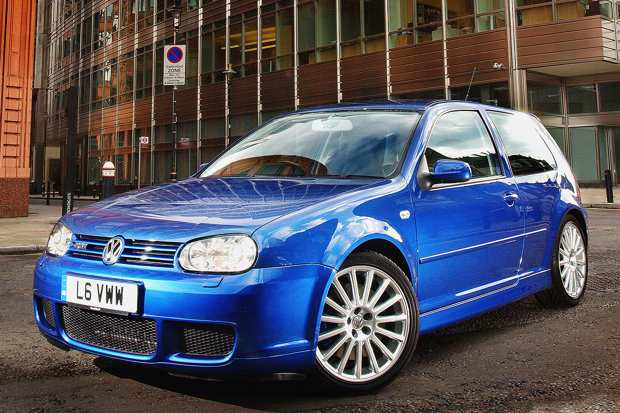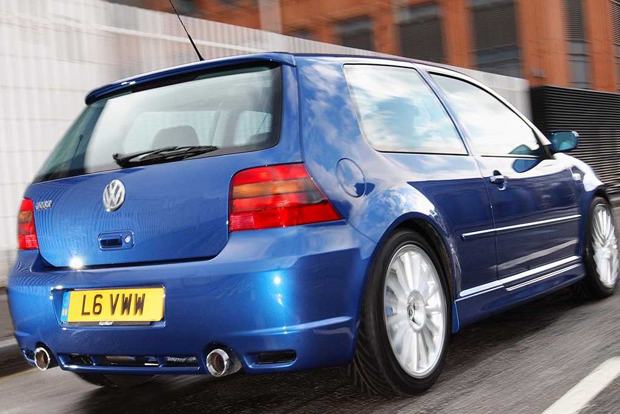Future Classic? Volkswagen Golf R32

To fully 'get' the original Volkswagen Golf R32, you have to first understand how disappointing the Mk4 Volkswage Golf GTI was to fans of the iconic bagde.
That may sound a bit harsh - after all, the Mk4 VW Golf GTI was a pretty good car, insofar as it was smart to look at and had a strong image. For those who craved a small hatchback with a bit of upmarket kudos, it ticked all the boxes.
But the clue, here, is in the word 'upmarket', as by the time the fourth generation came around the Golf GTI had morphed from a fun point-and-squirt hot hatchback to a premium German runabout, soft-touch plastics and all. Estate agents and sales managers adored it, but hardcore drivers did not.
Enter the VW Golf R32. It took Volkswagen five years to get the Golf Mk4 hot hatchback right, after trying various powertrains in the VW Golf GTI and even experimenting with the unusual V5 to make the Golf a bit quirky. None of them won praise from the diehard performance car fraternity.
But when the VW Golf R32 came on the scene, they had no choice but to like it. Here was a car that looked fantastic, had a rorty 3.2-litre V6 with 237 bhp under the bonnet and, most importantly, a chassis set-up that proved that the Mk4 VW Golf wasn't quite as dowdy under the skin as we'd been led to believe.
The engine was derived from the old 2.8-litre VR6, with both cylinder banks sharing a head, but this time it came with four valves per cylinder.

With the power fed to the road via a Haldex four-wheel drive system and, for the first time, the option of Volkswagen's clever DSG gearbox, it was capable of 0-60mph in just 6.4 seconds, complete with mellifluous V6 exhaust note and none of the disadvantages caused by turbo lag.
Today, of course, the DSG style of gearbox is the norm, but back in 2003 its super-quick changes thanks to its dual-clutch set-up were incredible and made a two-pedal transmission behave like it never had done before.
There was a sense of occasion to the VW Golf R32's cabin, too. Bespoke Recaro bucket seats, drilled pedals and a Golf R32-specific leather steering wheel letting you know it was something special, without being too overt about the whole thing.
Because of these factors, the VW Golf R32 was liked from day one. And that's reflected in the values, with the earliest cars still commanding £6000 or so. It seems that the context provided by the Mk4 VW Golf GTI has actually flattered the Golf R32, so if you want one, they're never going to be cheap. They are, however, tremendously good fun.

